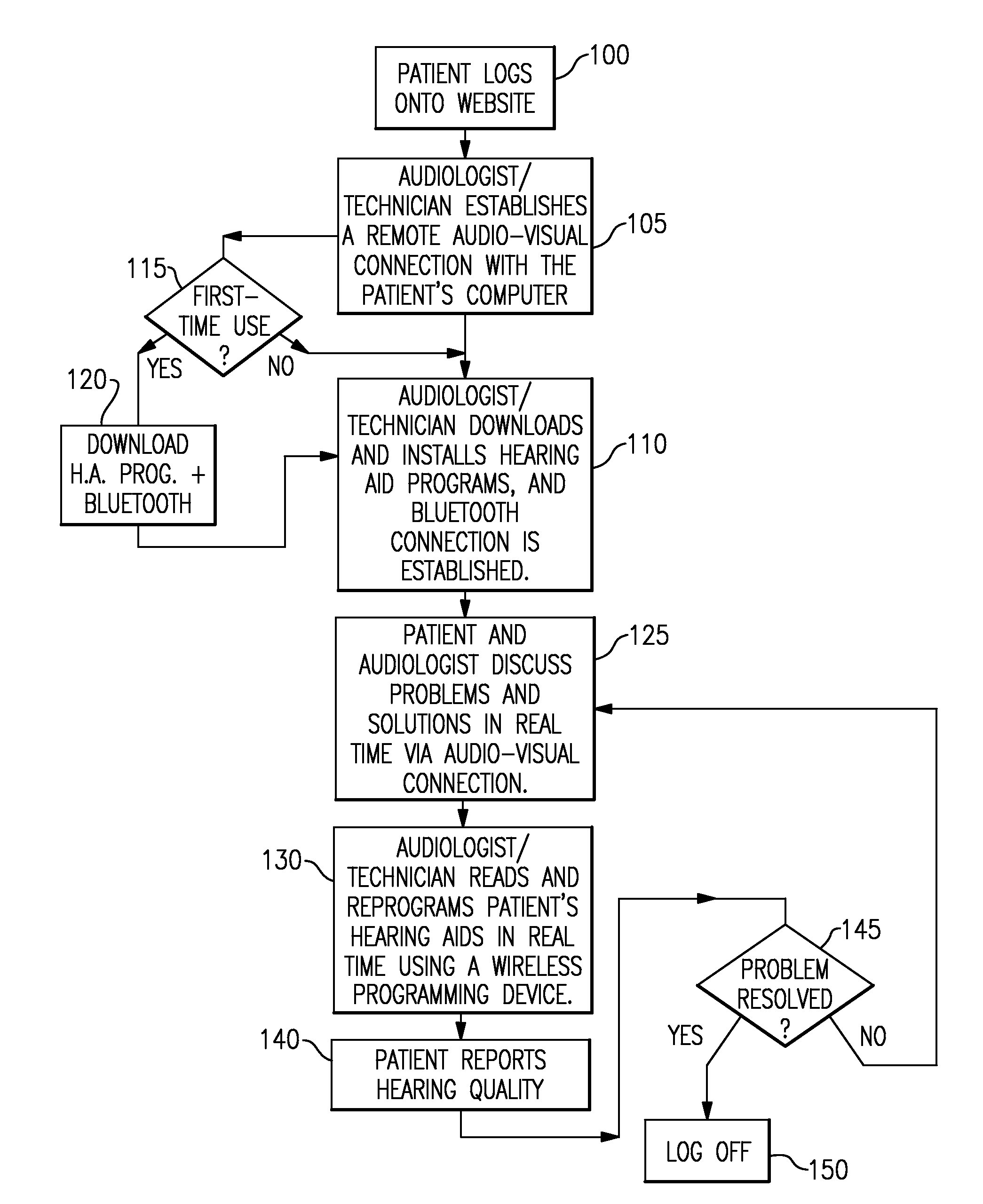Remote Programming System for Programmable Hearing Aids
a programmable hearing aid and remote programming technology, applied in the field of programmable digital hearing aids, can solve the problems of difficulty in duplicate by practitioners, less than optimal hearing aid performance, inconvenient appointment with hearing specialists, etc., and achieve the effect of convenient adjustment of hearing aid parameters and simple real-time conta
- Summary
- Abstract
- Description
- Claims
- Application Information
AI Technical Summary
Benefits of technology
Problems solved by technology
Method used
Image
Examples
Embodiment Construction
[0022]With reference now to the Drawing, FIG. 1 shows the set-up and equipment arrangement 10 for a hearing aid patient at the patient location, which may be at the patient's home, for example, or may be at another location convenient to the patient, e.g., a senior center or a Veteran's center. The patient equipment 10 includes a personal computer 12, here shown as a small lap-top device with an incorporated keyboard and pointer device for interfacing with the computer, and a video monitor screen. Software is provided specifically to permit remote connection with a hearing aid practitioner at some distant location and to permit the hearing aids to be reprogrammed as necessary during a session between the patient and the practitioner. In this illustration, the software is contained on a CD-ROM 14 that is mailed or shipped to the patient, but in many or most cases the software can be downloaded to the patient computer 12. An Internet connection 16 is shown here for connecting the pati...
PUM
 Login to View More
Login to View More Abstract
Description
Claims
Application Information
 Login to View More
Login to View More - R&D
- Intellectual Property
- Life Sciences
- Materials
- Tech Scout
- Unparalleled Data Quality
- Higher Quality Content
- 60% Fewer Hallucinations
Browse by: Latest US Patents, China's latest patents, Technical Efficacy Thesaurus, Application Domain, Technology Topic, Popular Technical Reports.
© 2025 PatSnap. All rights reserved.Legal|Privacy policy|Modern Slavery Act Transparency Statement|Sitemap|About US| Contact US: help@patsnap.com



